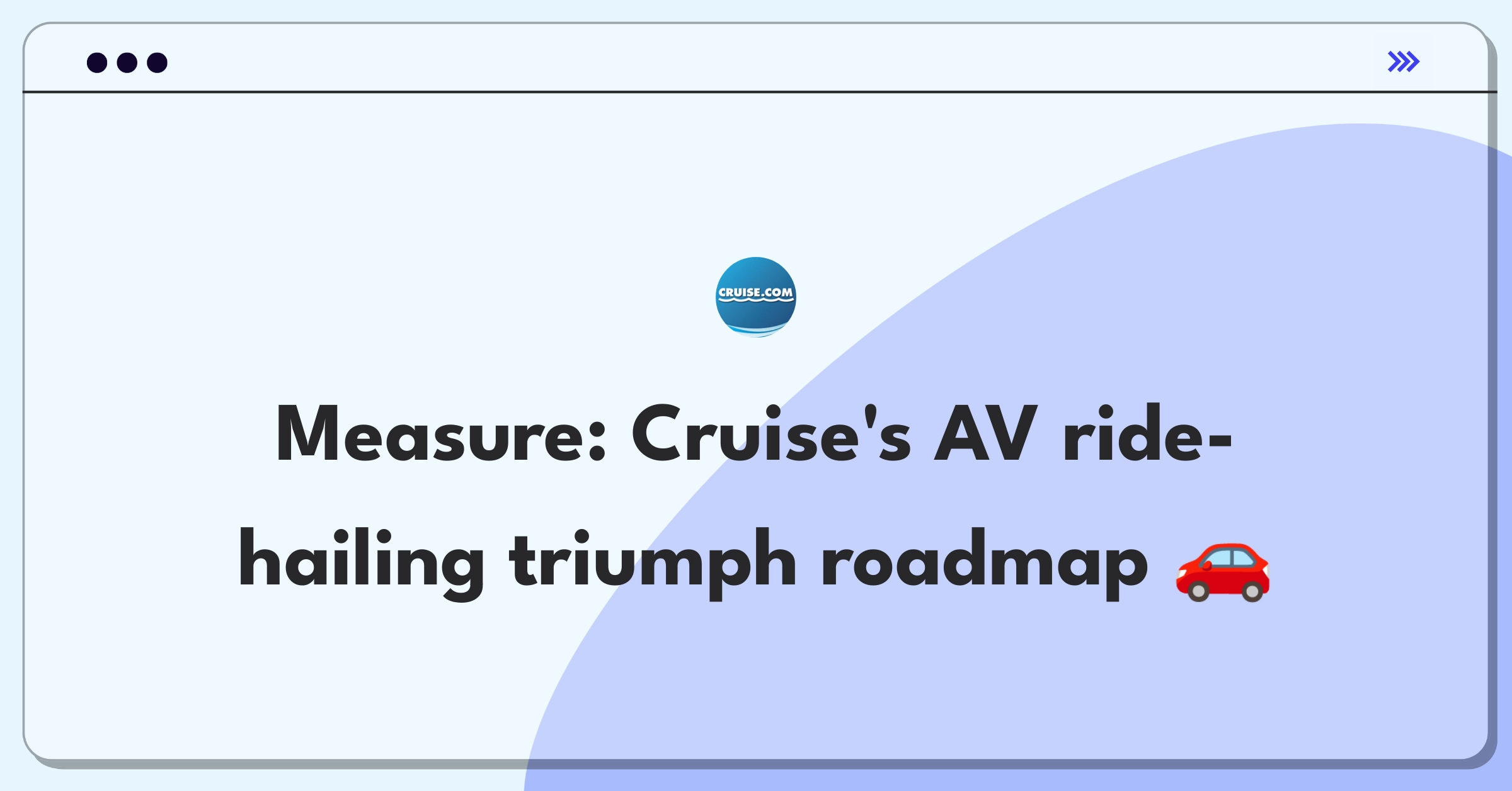Introduction
Defining the success of Cruise's ride-hailing service requires a comprehensive approach that considers multiple stakeholders and metrics. To effectively evaluate this product's performance, I'll follow a structured framework covering core metrics, supporting indicators, and risk factors while considering all key stakeholders.
Framework Overview
I'll follow a simple success metrics framework covering product context, success metrics hierarchy.
Step 1
Product Context
Cruise's ride-hailing service is an autonomous vehicle transportation platform that allows users to request rides through a mobile app. The service operates in select urban areas, utilizing Cruise's fleet of self-driving electric vehicles to provide on-demand transportation.
Key stakeholders include:
- Users: Seeking convenient, safe, and affordable transportation
- Cruise (company): Aiming to monetize its autonomous technology and expand market share
- Regulators: Ensuring public safety and proper operation of autonomous vehicles
- Investors: Looking for growth and profitability
- Local communities: Interested in reduced traffic congestion and emissions
User flow:
- Open app and request ride
- Autonomous vehicle is dispatched
- User enters vehicle and journey begins
- Vehicle navigates to destination
- User exits and ride is completed
This service fits into Cruise's broader strategy of commercializing autonomous vehicle technology and expanding beyond just developing the technology to operating a full-scale transportation service.
Compared to traditional ride-hailing competitors like Uber and Lyft, Cruise's service eliminates human drivers, potentially reducing costs and improving consistency. However, it faces unique challenges in terms of technology reliability and public trust.
Product Lifecycle Stage: Early Growth - The service has launched in limited markets and is focused on expanding its operational domain and user base while continuously improving the technology.
Software considerations:
- Platform: Mobile app for users, cloud-based dispatch and routing systems
- Integration points: Payment processing, mapping services, vehicle control systems
- Deployment model: Continuous integration/continuous deployment for software updates, over-the-air updates for vehicle firmware
Subscribe to access the full answer
Monthly Plan
The perfect plan for PMs who are in the final leg of their interview preparation
$99 /month
- Access to 8,000+ PM Questions
- 10 AI resume reviews credits
- Access to company guides
- Basic email support
- Access to community Q&A
Yearly Plan
The ultimate plan for aspiring PMs, SPMs and those preparing for big-tech
$99 $33 /month
- Everything in monthly plan
- Priority queue for AI resume review
- Monthly/Weekly newsletters
- Access to premium features
- Priority response to requested question


.png)